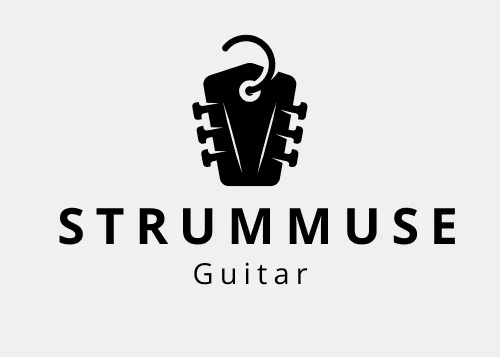Learning the guitar fretboard notes is one of the biggest milestones in every guitarist’s journey. At first, the fretboard may feel like a maze with endless frets and strings. But once you learn guitar fretboard patterns and train your memory, everything becomes easier: improvisation, songwriting, solos, and even jamming with others.
This guide will walk you through how to memorize notes on the guitar fretboard, break down effective methods, and share tips that actually work in real practice. Whether you’re a beginner struggling with note names or an intermediate player trying to remind guitar fretboard notes during solos, you’ll find practical strategies here.
Why Memorizing Guitar Fretboard Notes Matters
Before diving into techniques, let’s talk about why this is important. Many guitarists skip learning notes and rely only on chord shapes or tab numbers. While this works short-term, it limits growth in the long run.
Here’s what happens when you learn guitar fretboard note positions:
- 🎶 Improvisation becomes natural – You know exactly which notes fit in a scale or key.
- 📝 Songwriting improves – You stop guessing and start creating intentionally.
- 🎸 Chord building gets easier – You understand intervals and can find inversions.
- 🎧 Communication with other musicians – You can talk in musical language, not just “play at the 5th fret.”
In short, memorizing the guitar fretboard notes transforms you from a pattern player into a true musician.
The Layout of the Guitar Fretboard
To remind guitar fretboard notes, you need to know how the fretboard is built.
The Open Strings
Standard tuning of a 6-string guitar is:
| String | Note (Open) |
|---|---|
| 6th (thickest) | E |
| 5th | A |
| 4th | D |
| 3rd | G |
| 2nd | B |
| 1st (thinnest) | e |
Notice that the 6th and 1st strings are both E (low and high E). This symmetry is helpful when you start to learn guitar fretboard patterns.
The 12-Fret Repetition
One golden rule: after the 12th fret, notes repeat exactly like the open strings.
So if you can memorize up to the 12th fret, you’ve essentially learned the whole guitar.
Example:
- 5th string open = A
- 5th string 12th fret = A again
Step 1: Start with Natural Notes
When you’re learning how to memorize notes on the guitar fretboard, start simple.
Natural notes = A, B, C, D, E, F, G (no sharps or flats).
Why?
- They form the backbone of the fretboard.
- Once you remind guitar fretboard notes that are natural, adding sharps and flats is easy.
Here’s a chart of natural notes up to the 12th fret:
| Fret | 6th String (E) | 5th (A) | 4th (D) | 3rd (G) | 2nd (B) | 1st (e) |
|---|---|---|---|---|---|---|
| 0 | E | A | D | G | B | e |
| 1 | F | Bb | Eb | Ab | C | F |
| 2 | G | B | E | A | D | G |
| 3 | G# | C | F | A# | D# | G# |
| 5 | A | D | G | C | E | A |
| 7 | B | E | A | D | F# | B |
| 8 | C | F | A# | D# | G | C |
| 10 | D | G | C | F | A | D |
| 12 | E | A | D | G | B | e |
👉 Focus on natural notes first when trying to learn guitar fretboard patterns.
Step 2: Use Octave Patterns
Octaves are the secret weapon for how to memorize notes on the guitar fretboard.
Two Useful Shapes:
- Root (6th string) → Octave (4th string, +2 frets, -2 strings)
- Root (5th string) → Octave (3rd string, +2 frets, -2 strings)
Example:
- 6th string, 3rd fret = G
- 4th string, 5th fret = also G
This way, one note leads you to multiple positions, helping you remind guitar fretboard notes faster.
Step 3: Anchor Notes on the Fretboard
Don’t try to memorize all 72 notes at once. Instead, use “anchor notes.”
Key Anchors to Learn:
- 5th fret and 7th fret notes (easy markers)
- Open strings and 12th fret repeats
- Octaves of E, A, D, G, B, C
By learning just 12–15 anchors, you’ll gradually learn guitar fretboard without overwhelm.
Step 4: Apply the Chromatic Rule
Between every natural note, there’s either:
- A half step (E→F, B→C)
- Or a whole step (A→B, C→D, etc.)
So if you know one note, you can instantly figure out the next.
Example:
- 6th string, 5th fret = A
- Next fret (6th) = A# (or Bb)
- Next = B
This trains your brain to quickly remind guitar fretboard notes even if you forget them.
Step 5: Practice with Musical Context
Memorizing notes in isolation is boring. Instead, connect them with songs.
Exercises to Try:
- Play scales while naming notes out loud.
- Take a chord progression and find root notes across strings.
- Improvise a solo but say each note name as you play.
This way, you’re not only learning guitar fretboard notes, but also applying them in real music.
Step 6: Use Visualization and Mnemonics
Sometimes, memory tricks work wonders.
- Visualize the fretboard as a map instead of numbers.
- Use mnemonics:
- E–A–D–G–B–E → “Eat All Day Get Big Easy.”
- Break the fretboard into zones (frets 0–4, 5–8, 9–12).
Such mental shortcuts make it easier to learn guitar fretboard structures.
Step 7: Daily Micro-Practice
Consistency beats cramming. Spend 5 minutes daily on fretboard note drills.
👉 Example Drill:
- Pick one note (say C).
- Find all Cs across the fretboard.
- Say them out loud while playing.
After a few weeks, you’ll never need to remind guitar fretboard notes again—they’ll be automatic.
Check Out:- Mastering the Strings: How to Practice Guitar at Home Daily
Tools to Help You Memorize the Fretboard
You don’t need to do it all manually. There are tools that speed up the process.
| Tool | How It Helps |
|---|---|
| Fretboard Flashcards | Train recognition of notes |
| Guitar Fretboard Diagrams | Visual mapping |
| Mobile Apps (e.g., Fretboard Hero, Justin Guitar) | Gamified learning |
| Backing Tracks | Practice notes in real music |
Searching for a DADGAD tuning app? Similarly, you can look for guitar fretboard notes apps that train your memory.
Common Mistakes to Avoid
When trying to learn guitar fretboard, watch out for these traps:
- ❌ Trying to memorize everything in one sitting
- ❌ Ignoring natural notes and going straight to sharps/flats
- ❌ Never applying notes in real music
- ❌ Relying only on TAB numbers instead of note names
Avoiding these mistakes ensures you actually remind guitar fretboard notes when needed.
Check our Post:-

FAQs on How to Memorize Notes on the Guitar Fretboard
Q1: How long does it take to memorize the fretboard?
It depends on consistency. With 5–10 minutes of daily focused practice, most players can learn guitar fretboard notes within 4–6 weeks.
Q2: Do I need to know all notes for beginner songs?
Not really. But even at beginner level, knowing at least the E and A string root notes will help you build chords and move shapes.
Q3: What is the fastest way to remind guitar fretboard notes?
The fastest way is combining anchor notes, octaves, and note-finding exercises. Apps or flashcards can also speed things up.
Q4: Should I memorize notes by string or by fret?
Start with by string (E and A roots), then expand to by fret (5th, 7th, 12th frets). Mixing both gives a complete map of the guitar fretboard notes.
Q5: Is it necessary for every guitarist?
Yes, especially if you want to improvise, compose, or play professionally. Even casual players benefit from knowing how to memorize notes on the guitar fretboard.
Also Check:- What Are Power Chords on Guitar? The Ultimate Beginner-to-Advanced Guide
Conclusion
Memorizing the guitar fretboard notes may feel intimidating, but it’s absolutely doable if you break it down. Start with natural notes, use octaves and anchors, apply the chromatic rule, and practice with songs.
With consistent effort, you’ll no longer have to remind guitar fretboard notes—they’ll come naturally under your fingers.
If you dedicate even 5 minutes a day, you’ll soon reach the point where you can learn guitar fretboard notes instantly, just like reading words in a book.
🎸 Remember: The fretboard is not a mystery. It’s a map, and now you know how to read it.

